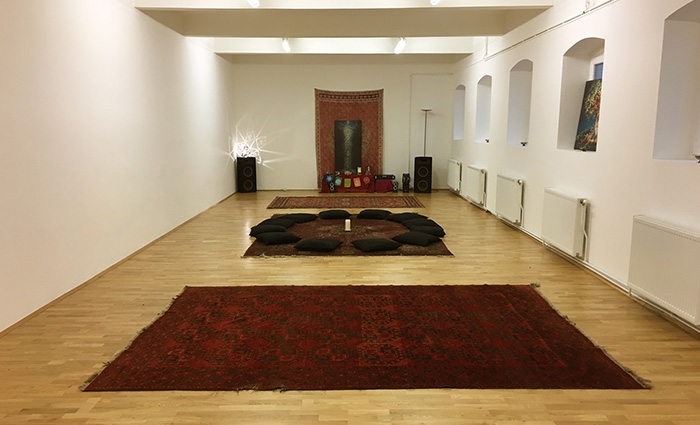The Vienna Academy of Visionary Art
closed its doors in 2020 due to the Global Pandemic.
The Academy Directors Laurence Caruana & Florence Ménard
now manage The Academy of Visionary Art,
which offers its popular Seminars in Torri Superiore Italy.
During it’s seven year history, the Academy was located in the Palais Palffy at Josefsplatz (2013 – 2016) across from the Hofburg Palace in the historical centre of Vienna, and in the Otto Wagner building at Döblergasse 2 (2016 – 2020) in the artistic and alternative 7th district of Vienna.
Contact Information
The Academy:
Email inquiries and questions to: office@academyofvisionaryart.com.
The Cultural Space:
Email inquiries and questions to: gallery@academyofvisionaryart.com.
The Facilities
Spread across two floors and covering over 500 sq. meters (5,400 sq. feet), the Academy facilities included three large rooms:
- The Studio – Well-lit with tall windows & high ceilings – a creative space reserved for the teachers and students
- The Gallery – A street-front adaptable space for workshops, exhibitions, lectures and figure drawing
- The Temple – A sound-insulated sous-terrain space for mind & body activities such as yoga, integrative dance and concerts
We also had a variety of smaller rooms for our communal kitchen / relaxation area, administrative offices, teachers’ studios and crafts atelier.
The Cultural Space:
Towards the end of his life, the renowned Jugenstil architect Otto Wagner built the pair of buildings at Döblergasse 2 (corner of Neustiftgasse 40) and Döblergasse 4, as the final application of the ideas published in his 1896 book Moderne Architektur. Indeed, Wagner moved into the top floor of Döblergasse 4, where he passed the last years of his life. The architect explored new materials such as aluminium and cement, while pursuing a linear geometry in black and white. In a period when all Viennese architects followed historical precedents, it was one of the first buildings to not represent pillars on its facade. All the functional elements such as door handles and light fixtures were carefully designed and integrated into the building.
The workshops of the famous Wiener Werkstätte were located at Döblergasse 2 & 4, particularly the ateliers for women’s fashion, metal, glass-making, book-binding and lamps. Architects such as Koloman Moser and Josef Hoffmann, along with Secessionist artists like Gustave Klimt and Egon Schiele, contributed designs to the enterprise, which operated there from 1912 until the firm’s demise in 1926.
Follow us on Facebook! |
Youtube
|
|


